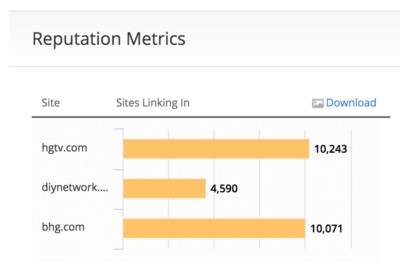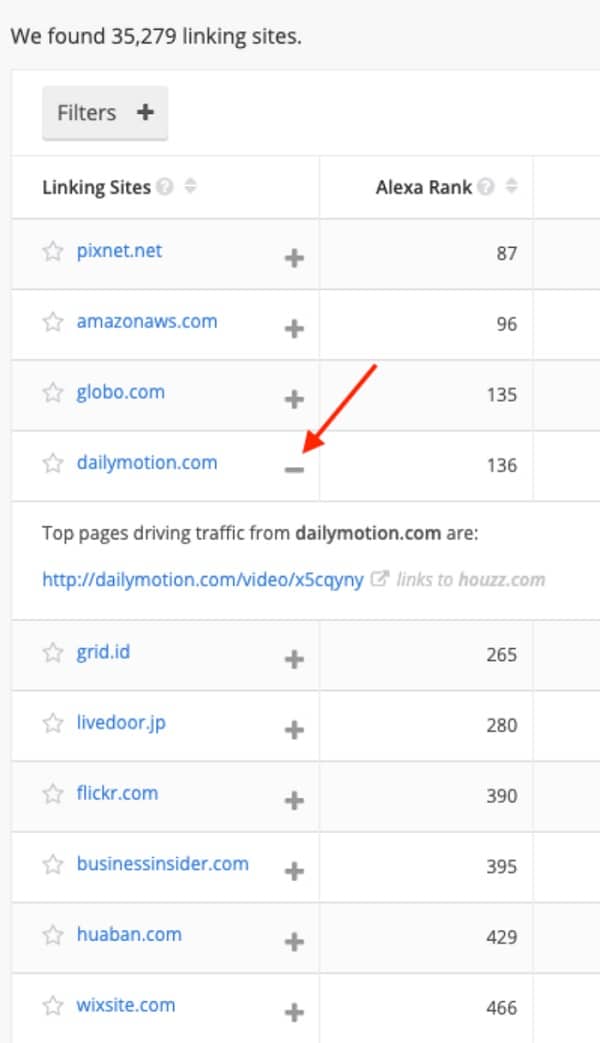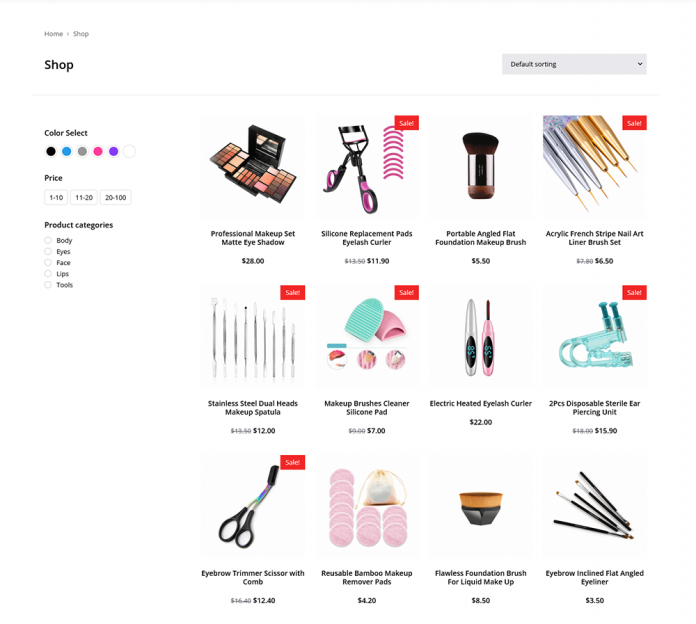Links allow search engine bots to see how web pages are related to one another. They navigate from one website to another using do-follow links while avoiding nofollow ones. Nofollow links, on the other hand, might add value to your website. Understanding how other websites connect to you is a critical first step toward developing a healthy backlink profile for your website.
Why should you be concerned? Consider the following: More high-quality external links leading to your website increase traffic – not only from people who click on those links but also from search engines. When we look at the top 100 websites based on Alexa Rank, we see that more than 90% have more than 2,000 backlinks. Backlinks to some of the number of the most popular website in the millions.
The Importance of Backlinks
Search engines, particularly Google, consider the quality and quantity of incoming connections to be a measure of your website’s value. Since 2005, Google has used a weighted point system called PageRank to assess how valuable a page is and where it should appear in search results. This system considers the worth of links referring to a page or website. High-quality links can propel your website to the top of search results.
So, how can you ensure that you’re acquiring the correct kinds of backlinks? How can you know if your website is using dofollow and nofollow links correctly? It all starts with recognizing the distinction and figuring out how to make both types of links work in your site’s advantage.
Read more on : Image SEO, HTTP Status Codes Cheat, Black Hat SEO, Website Speed Optimization
What Exactly Is a Dofollow Link?
A dofollow link, strictly speaking, does not exist. Dofollow is just a link’s default state. In other words, any link that lacks the nofollow attribute is a dofollow link.
When another website links to yours using a standard (also known as dofollow) link, it can have an immediate impact on search engine rankings.
In our article about guest blogging, here’s an example of a standard dofollow link:
Here’s a glance at the code behind the scenes:
What effect dofollow links have on on-site rankings?
Dofollow links are crawled by search engine bots to determine who is connecting to whom. These connections transfer a form of authority known as “link juice” from one site to another.
Assume a respectable site with a high PageRank connects to you. Search engines will regard your site as more credible, and your PageRank may rise as a result. This can help you rank higher in search engine rankings. (Learn more about PageRank and how search engines work in How Search Engines Work.)
How does one go about making a link dofollow?
When you add a new link to your website, such as a new blog post, it is normally set to dofollow by default.
Have you come across a nofollow link going to your website that you wish was a dofollow link? When a nofollow link is on someone else’s site, it cannot be converted to a dofollow link. Before contacting the site owner to ask whether they can follow the link (remove the nofollow tag on the link) to your website, you need first to understand what types of links are normally nofollow connections.
Keep in mind that nofollow links are widespread in some situations — and this isn’t always a bad thing.
What Exactly Is a Nofollow Link?
Dofollow and nofollow links appear identical to the ordinary website visitor. Nofollow links, on the other hand, include a short piece of code known as an attribute that tells search engine bots not to follow the link. This is what it looks like: rel=”nofollow”.
Here’s an example of a nofollow link from our own page on duplicate content:
This is the code that informs search engine bots not to follow the link. (We’ll teach you later how to view this for any page.)
Nofollow links, according to Google, do not send any PageRank to the domain to which they are linked. This means that nofollow links leading to your website have no effect on its ranking in search engine results pages. This dates back to 2005 when Googlers Matt Cutts and Jason Shellen developed the nofollow option to combat comment spam. Nofollow links prohibit black hat SEO practitioners from benefitting from links established in high-authority site comments areas.
Nofollow links are typically seen in the following sorts of content:
- Comments on a blog
- Forums on social media
- Publications in the press
- Widgets for sponsored content
So, if you want to boost the authority of your website through link building, don’t spend the majority of your time, for example, making comments on blogs or submitting free press releases.
That being said, while nofollow links will not directly enhance your PageRank, they should not be dismissed out of hand.
Do nofollow links have any worth?
Although nofollow links do not directly enhance the PageRank of your website, they can nonetheless add value in a variety of ways.
1. A natural backlink profile necessitates the use of nofollow links
A website will naturally have a mix of nofollow and dofollow links going to it. In reality, Google’s Penguin update noticed that having 100% dofollow links on a page was suspect. (Especially if all of those links used the same anchor text!) Consider establishing a natural-looking backlink profile; you don’t need to contact every site that links to you with a nofollow link and ask for a dofollow one. We’ll go through this in further detail later.
2. Nofollow links can enhance traffic and brand exposure
Many links from popular websites are set to nofollow. While they may not directly contribute to the PageRank of your website, they can be a wonderful source of traffic when people click through to visit your site. (In Google Analytics, visitors that come to your site via a link from another website are referred to as Referrals.)
Consider the following news websites and social media channels: If your website is linked in a New York Times piece, for example, the exposure might be quite beneficial to your business. Consider the value of viral publicity on social media or upvotes on a Reddit response that links to your resource. A link from Facebook or Reddit will not directly enhance your PageRank, but it may provide a good source of traffic and brand awareness. In one month, for example, marketer Neil Patel received nearly 10,000 referral visitors from Quora.
Even if you don’t receive any “link juice,” how that traffic interacts with your site might have an impact on your rankings. When determining the worth of a website, search engines take into account more than just its backlink profile. People who spend time on your site, click through to other pages, and share pages can all make a difference.
3. Nofollow links can aid in the growth of dofollow links
The visibility you obtain from links on popular websites can help you gain more attention. The more people that hear about you, the more likely it is that you will earn dofollow links naturally. Neil Patel’s Quora traffic, as indicated above, has most certainly resulted in more fans and followers of his site, which may lead to additional connections to his material.
When Should You Use Nofollow Links vs. Dofollow Links on Your Own Website?
So far, we’ve talked about nofollow and dofollow links in terms of someone else linking to your site. However, when linking to third-party websites, you may want to use the nofollow attribute.
Advertising, sponsored blog articles, text link ads, and other links resulting from compensated relationships, for example, should employ the nofollow attribute. This helps Google understand that you are not attempting to game the system using a link strategy.
Furthermore, any content that could be regarded as “untrustworthy” should employ the nofollow property for links. If you accept comments on your site, this should incorporate them. (You may control nofollow links for WordPress sites with the help of a WordPress plugin.)
How to Make a Nofollow Link
Assume you’ve agreed to accept a sponsored post on your blog. To add the nofollow property to links within the article, edit the code as follows:
Change to the HTML view in your blog editor to change code directly.
Locate the URL that you want to make nofollow.
To make it seem like this, add the nofollow attribute:
a href=”http://www.example.com/” rel=”nofollow”
a>Example of anchor text/a>
How to Determine Whether a Link Is Dofollow or Nofollow
For web users, nofollow and dofollow links are identical. However, there are a few ways to tell the difference: You may do this manually or with a Chrome extension that highlights nofollow links.
View the page source to manually check a page. Click the View menu in Chrome, for example, and then mouse over Developer. Then, select View Source. The source code for the page you’re on will be displayed in the new window that opens. Look for the term “nofollow” on the page. (To open a search bar, press Ctrl F and type “nofollow.” If the term appears on the page, it will be highlighted. To verify all links, instead, search “a href” and go through the links to discover which ones have the nofollow tag.)
If you’re going to be checking a lot of pages for nofollow links, use a plugin. All nofollow URLs will be highlighted in red by the NoFollow Chrome Extension.
What is the best nofollow-to-dofollow link ratio?
There is no “optimal” nofollow to dofollow backlink ratio for links going to your website. Some people recommend a 50/50 split, while others recommend a 40/60 split, and yet others recommend a 30/70 split for nofollow/dofollow links. Looking at top websites in the United States by Alexa Rank, the mix may be closer to 25/75, indicating that the more successful websites have a higher number of dofollow links.
A range of link types will naturally be included in the optimum mix for your site. Examine a sample of websites in a comparable space or industry to get a concept of what would be natural for your industry. Follow the example of high-ranking sites.
How to Locate Competitive Backlink Data for Your Industry
To examine your competitors’ backlinks, follow these steps. Alexa’s competition analysis capabilities can assist.
- Determine who your top competitors are.
- Examine the sources of their backlinks.
- Go to each linked page for the highest-authority linking sites to see if the links are dofollow or nofollow.
- Calculate the average ratio of dofollow to nofollow links in your industry.
HGTV.com is one example.
Consider the following example from HGTV.com:
1) We obtain an automatically created list of sites that compete with HGTV by using the Site Overview tool. We can examine the number of sites referring traffic to each site by scrolling down to the Competitive Analysis area of the program.
2) Houzz.com appears to have the most referral sites, so we’ll start with their backlink profile. This information is available in the Competitor Backlink Checker, which requires an Alexa Advanced account to view. The top sites connecting to Houzz may be found by sorting by Alexa Rank. You can discover which page is driving the most traffic from the site by clicking the Plus sign.
3) When visiting the page on dailymotion.com, it appears that the link leading to Houzz does not have the nofollow attribute.
The link to Houzz from amazonaws.com likewise lacks the nofollow attribute.
4) After reviewing a sample of backlinks for the other rivals listed, you’ll have a better idea of the types of connections your competitors are obtaining. Both of the preceding links, for example, went to the Houzz website as a social platform.
Consider how you can improve your dofollow vs. nofollow link mix if your site’s backlink profile falls short of the best-performing sites in your competitive set. Has your entire promotion been based on advertising up to this point? Are you only aggressive when it comes to blog comments? It could be time to switch things up. See our 21 strong link-building strategies to help you diversify and establish a natural and valuable backlink profile.
What comes next?
Spend some time optimizing and maintaining your site’s backlink profile. Once you’ve grasped the fundamentals of dofollow and nofollow links, you’ll be ready to put your knowledge to use. Opportunities will develop as a result of the aforementioned examination. Remember that while dofollow links can help you build PageRank, nofollow links might bring you vital traffic and engagement.
You May also like sitescorechecker, Pro Site Ranker














